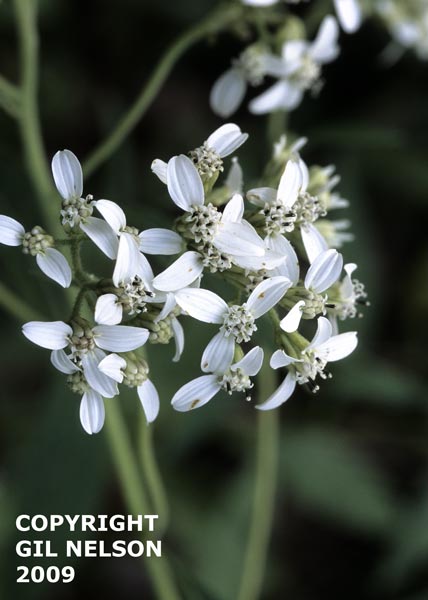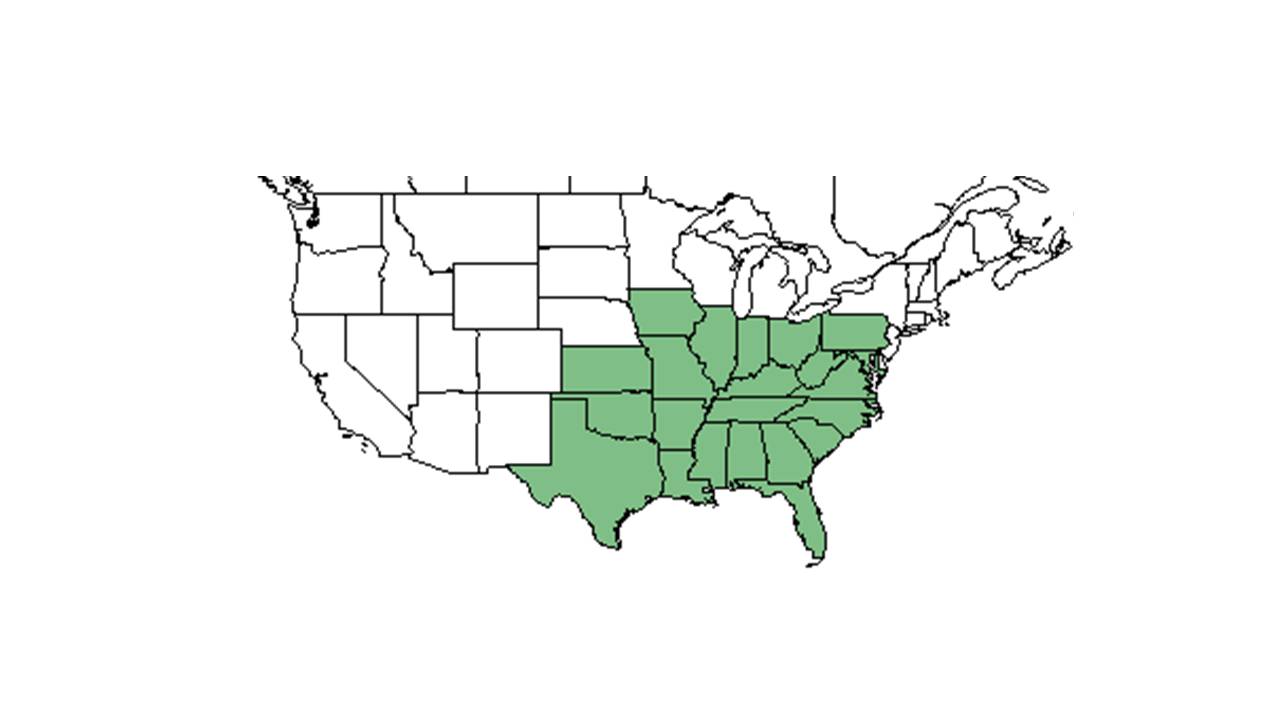Verbesina virginica
| Verbesina virginica | |
|---|---|

| |
| Photo taken by Gil Nelson | |
| Scientific classification | |
| Kingdom: | Plantae |
| Division: | Magnoliophyta – Flowering plants |
| Class: | Magnoliopsida – Dicotyledons |
| Order: | Asterales |
| Family: | Asteraceae ⁄ Compositae |
| Genus: | Verbesina |
| Species: | V. virginica |
| Binomial name | |
| Verbesina virginica L. | |

| |
| Natural range of Verbesina virginica from USDA NRCS Plants Database. | |
Common names: White crownbeard, Common Frostweed
Contents
Taxonomic notes
Variety: Verbesina virginica Linnaeus var. laciniata (Poiret) A. Gray; Verbesina virginica Linnaeus var. virginica.[1]
Description
A description of Verbesina virginica is provided in The Flora of North America.
Distribution
Ecology
Habitat
Verbesina virginica can be found in sandy loams of mixed hardwoods; floodplains; mixed oak-pine woodlands; live oak woods; sandy dunes; slash pinewoods; open calcareous bluffs; scrubs; mesic woodlands of shallow ravines; clay soils of mixed hardwood/cabbage palm communities; calcareous banks of rivers; deciduous upland woods; wet hammocks; swamps; near brackish water; wooded pasture with exposed limestone; low swamp with alluvial soil; pine-oak-hickory woodlands; limestone glades; cedar glade near shallow stream; and wet pine flatwoods. [2]
Associated species include Melanthera nivea, Myrica cerifera, Baccharis, Polymnia, Sabal, Quercus, Schinus, Desmodium ochroleucum, D. rotundifolium Rhynchosia, Rhus aromatica, Polymnia uvedalia, Melanthera nivea, and Calyptocarpus. [2]
Phenology
V. virginica has been observed to flower March through December with peak inflorescence in September and fruit September through November.[2][3]
Conservation and management
Cultivation and restoration
Photo Gallery
References and notes
- ↑ Weakley, A.S. 2015. Flora of the southern and mid-atlantic states. Working Draf of 21 May 2015. University of North Carolina at Chapel Hill, Chapel Hill, North Carolina.
- ↑ 2.0 2.1 2.2 Florida State University Robert K. Godfrey Herbarium database. URL: http://herbarium.bio.fsu.edu. Last accessed: July 2015. Collectors: Loran C. Anderson, Kathy Craddock Burks, Robert Kral, Robert K. Godfrey, M. R. Darst, Victoria I. Sullivan, R. E. Perdue, Jr., Richard S. Mitchell, Robert L. Lazor, Jean W. Wooten, Cecil R Slaughter, Marc Minno, George R. Cooley, R. J. Eaton, James D. Ray, Jr., James R. Burkhalter, R. M. Eilers, Andre F. Clewell, J. B. Nelson, S. D. Todd, Delzie Demaree, H. F L. Rock, Robert Runyon, James W. Hardin, J. Mendell, B. C. Tharpe, Fred A. Barkley, J. Haesloop, Sidney McDaniel, Paul L. Redfearn, Jr., R. A. Pursell, W. M. Longnecker, J. P. Gillespie, Lester F. Ward, Harry E. Ahles,, C. L. Lundell, John W. Thieret, Norlan C. Henderson, K. E. Blum, W. D. Reese, O. Hester, A. E. Radford, C. L. Lundell, Amelia Lundell, V. L. Cory, R. Komarek, R. A. Norris. States and Counties: Alabama: Limestone. Arkansas, Hot Springs, Howard, Lawrence, Marion, Polk, Yell. Florida: Brevard, Clay, Dade, Dixie, Escambia, Franklin, Gadsden, Hernando, Hillsborough, Holmes, Jackson, Jefferson, Lee, Leon, Liberty, Osceola, Pinellas, St. John, Taylor, Wakulla, Walton. Georgia: Grady, Thomas, Walker. Kentucky: Jessamine. Louisiana: Iberia, Lafayette, Ouachita. Mississippi: Chickasaw, Coahoma, Hancock, Jackson. Missouri: Douglas, Franklin, Stone. South Carolina: Charleston, Pickens. Tennessee: Davidson, Rutherford, Sumner. Texas: Cameron, Dallas, Gonzales, Hays, Hidlago, Somervell. Compiled by Tall Timbers Research Station and Land Conservancy.
- ↑ Nelson, G. PanFlora: Plant data for the eastern United States with emphasis on the Southeastern Coastal Plains, Florida, and the Florida Panhandle. www.gilnelson.com/PanFlora/ Accessed: 15 DEC 2016